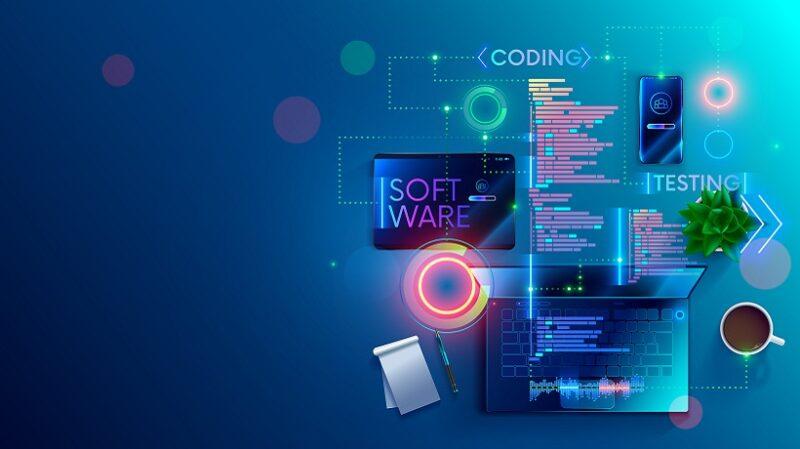
Cost To Build A Successful Education Software: Best Practices And Tips

Your Guide To Educational Software Development Expenses
The popularity of educational mobile applications is soaring right now. Education-related applications are the most downloaded on Google Play Store. Downloads of educational applications rank second on the App Store. The revenue of the online education market is expected to reach a valuation of $166.60 billion in 2023, growing at a CAGR of 9.37% during 2023-2027. Overall, educational apps are among the most downloaded, and these figures are enormous! More people are becoming intrigued by mobile learning and favoring it. When determining how much it costs to create educational software, factors like the complexity of the idea, the developing team, and the location must be considered. Working with an educational software development company is the best method to maximize your idea while receiving the best estimate.
Calculating the expenses of creating educational software is challenging. The average cost to build the MVP stage is between $15,000 and $50,000. However, the total price could be anywhere between $10,000 and $100,000. A minimal viable product, or MVP, is educational software with fewer features and a lower cost than an app with all the features users want.
Important Elements Affecting The Cost Of Creating Educational Software
Here are some of the factors influencing the cost of educational software product development:
- Program complexity
Your idea’s ambiguity will determine how complicated or simple the educational software appears. The cost of developing software decreases with simplicity. It is less expensive and takes less time to build learning platforms with basic features. This is essential if you want to develop premium, quality-focused language learning software. - Platform’s technical details
The funding is also impacted by the app’s specification, particularly if it is designed to run on both Android and iOS. The cost of developing a mobile device-compatible educational app necessitates premium features, which have an impact on the total budget. - Development approach
The User Experience (UX) and speed are typically better with native mobile app creation. It is, therefore, more costly. If you require an app with a lot of sophisticated features, native app creation is the best option. However, a hybrid solution will work if you’re attempting to develop a straightforward product. - Complexities of UI/UX design
User Experience and User Interface (UI) have largely taken center stage in recent years among software development firms. Users can choose an application with a user-friendly style, simple navigation, and high functionality because there are so many options available. Naturally, the expense will increase the more you concentrate on enhancing the User Experience.
Financial Agreement With Your Tech Partner
Depending on the development team you choose to work with, the development expenses vary greatly. The price will depend on the contract you execute with the external development team if you decide to do so. Two common expenses of developing an app for eLearning are promotion and maintenance. Updating your app’s functions, fixing serious issues, scaling servers, and many other things are all required to keep it up to date. Based on the MVP price, maintenance for educational software will run between $4,000 and $8,000 per year. It accounts for 15% to 20% of the expenses of initial development. In addition to managing it, you must advertise your software to ensure it reaches the target market. Lastly, there are some other costs to consider:
Team Size
The product owner’s compensation is influenced by the number of people in the development team. The majority of software development firms are developers, team leads, quality assurance engineers, and UX/UI designers. In the long run, outsourcing will make it simpler to find the best team for the task, cut costs, and stay away from organizational problems. The cost of creating educational software is significantly influenced by the number of employees engaged. If you have made the decision to develop an educational website for all target audiences, you must take these considerations into account.
Gamification
It can be costly and challenging to implement advanced gamification tools like 3D graphics, intricate game mechanics, VR, AR, and Artificial Intelligence. There are less complicated and cost-effective tools like reward schemes, points, combat modes, tests, quizzes, and achievements that are excellent for enticing and motivating players despite their simplicity. This might have an impact on the total price of educational software.
Start With Your Educational Software Development Today
The world of online education is challenging, despite being financially rewarding. You need to be conscious of the group you are trying to reach, how different each student is, and the best way to communicate with them. It is difficult to complete this job by yourself. Therefore, ensure you have a crew of professionals to assist you in designing educational software. This makes it simpler for you and gives you more time to continue working on the program. The best EdTech companies have a wealth of experience creating educational software. Their professional teams can help you create comprehensive educational software by ensuring that they fully understand your company objectives, target market, and stakeholders.
Stay connected with us on social media platform for instant update click here to join our Twitter, & Facebook
We are now on Telegram. Click here to join our channel (@TechiUpdate) and stay updated with the latest Technology headlines.
For all the latest Education News Click Here
For the latest news and updates, follow us on Google News.

